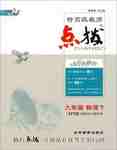题目内容
Learning style theory suggests that different people have different ways of obtaining information and use various methods to demonstrate(证明)their intelligence and ability. Although experts have many ideas and categories of learning, it is evident that people learn in three basic styles.
When learning something new, if you prefer to read the information, you are probably a student who learns through seeing. These learners like to see teacher’s facial expressions and body language clearly and rend to sit at the front of the classroom. They take detailed notes, think in pictures and can most easily absorb information from textbooks with diagrams, graphs, photographs and drawings.
Students who find it easiest to learn a new concept by hearing a teacher explain it are learning through listening. Reading aloud, using a tape recorder, hearing anecdotes(趣闻)and talking things through are the best methods for these learners to acquire new information. They give close attention to both the content of the discussion and the way that things are said, such as how the sound of the voice and speed of speech show the mood of the speaker.
Learning through doing means being active in exploring the environment and finding out about things by moving and touching. Students who have this learning style take a hands-on approach to education and enjoy experiments or surveys. They do not like to sit still for long periods of time and sometimes find it hard to concentrate when reading or listening.
Teachers study people’s various ways of learning as part of their training. They select a variety of activities to suit their students’ different learning styles. However, restrictions of time, space and resources often make it impossible for teachers to provide the best exercises for all learners. If you are aware of you own learning style, there is a lot you can do personally to improve your study skills and find the most appropriate ways to approach your study tasks. As a result, you will be able to manage your own learning and study more effectively.
| 【小题1】 | Features of students’ learning |
| Learning through seeing | *watch a teacher’s facial expressions and body language *sit 【小题2】 the platform *take detailed notes *think in pictures |
| 【小题3】 | *enjoy reading aloud *prefer to listen to recorded materials *fond of hearing something and 【小题4】 *pay special attention to the content of the discussion *focus on people’s【小题5】 |
| Learning through doing | *【小题6】 and know better about things by moving and touching. *know the world 【小题7】 *carry out experiments or surveys *dislike sitting still for long *【小题8】 concentrating when reading or listening |
| 【小题9】 | *A teacher 【小题10】 all his students with a certain teaching method *A student should improve his learning skills to learn more effectively. |
【小题1】Basic learning styles
【小题1】close
【小题1】Learning through listening
【小题1】talking things through
【小题1】ways of talking
【小题1】explore the environment
【小题1】through personal experience
【小题1】having difficulty/trouble in
【小题1】Conclusions
【小题1】can hardly satisfy
解析

 特高级教师点拨系列答案
特高级教师点拨系列答案
| |||||||||||||||||||||||||||||||||||||||||||||||||||||||||||
In bringing up children, every parent watches eagerly the child’s acquisition(学会) of each new skill---the first spoken words, the first independent steps, or the beginning of reading and writing. It is usual that parents hurry the child beyond his natural learning rate, but this can set up dangerous feelings of failure and states of worry in the child. This might happen at any stage. A baby might be forced to use a toilet too early, and a young child might be encouraged to learn to read before he knows the meaning of the words he reads. On the other hand, though, if a child is left alone too much, or without any learning opportunities, he loses his natural enthusiasm for life and his desire to find out new things for himself.
Parents vary greatly in their degree of strictness towards their children. Some may be especially strict in money matters, other are severe over time of coming home at night or punctuality (准时) for meals. In general, the controls imposed (强加的) represent the needs of the parents and the values of the community as much as the child’s own happiness.
As regards the development of moral standards in the growing child, consistency is very important in parent teaching. To forbid a thing one day and excuse it the next is not foundation for morality. Also, parents should realize that “example is better than precept”. If they are not sincere and do not practise what they preach (说教), their children may grow confused, and emotionally insecure when they grow old enough to think for themselves, and realize they have been to some extent fooled.
A sudden awareness of a marked difference between their parents’ principles and their morals can be a dangerous disappointment.
【小题1】 Eagerly watching the child’s acquisition of new skills ________.
| A.should be avoided |
| B.is universal among parents |
| C.sets up dangerous states of worry in the child |
| D.will make him lose interest in learning new things |
| A.encourage them to read before they know the meaning of the words they read |
| B.not expect too much of them |
| C.achieve a balance between pushing them too hard and leaving them on their own |
| D.create as many learning opportunities as possible |
| A.parents should be strict with their children |
| B.parents controls satisfy only the needs of the parents and the values of the community |
| C.parental restrictions vary, and are not always enforced for the benefit of the children alone |
| D.parents vary in their strictness towards their children according to the situation |
| A.observe the rules themselves |
| B.be aware of the marked difference between adults and children |
| C.forbid things which have no foundation in morality |
| D.satisfy their children’s needs |